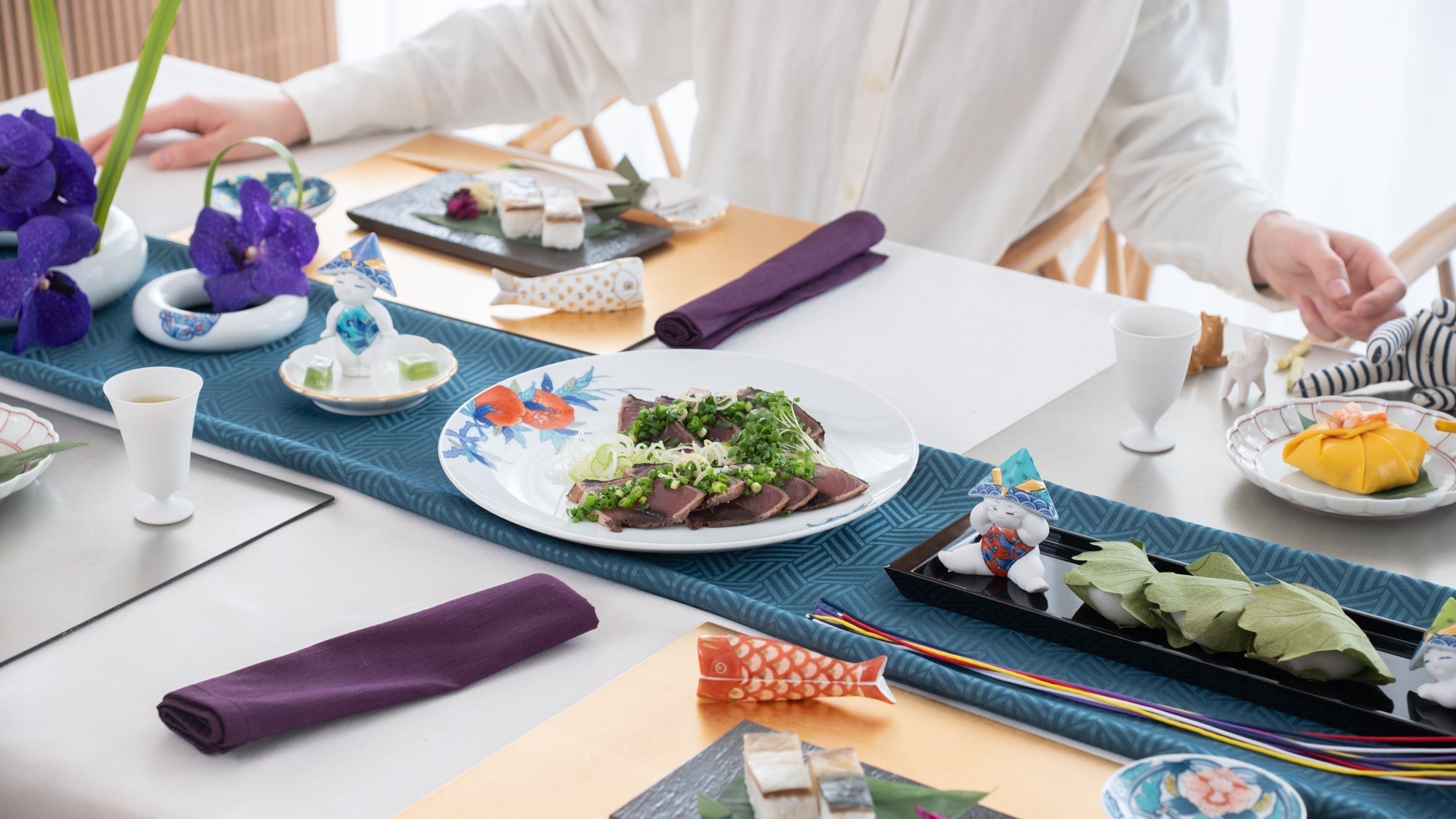
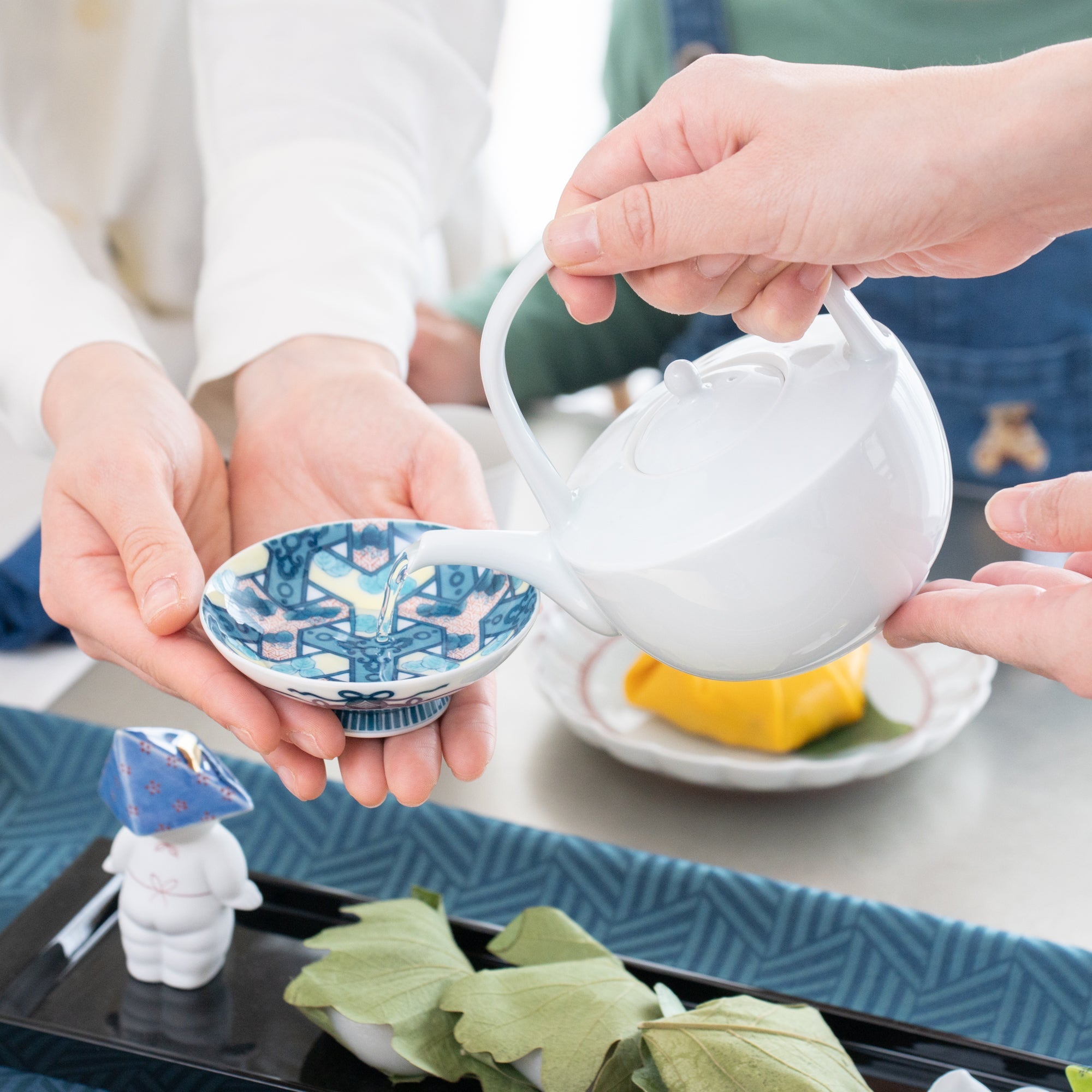
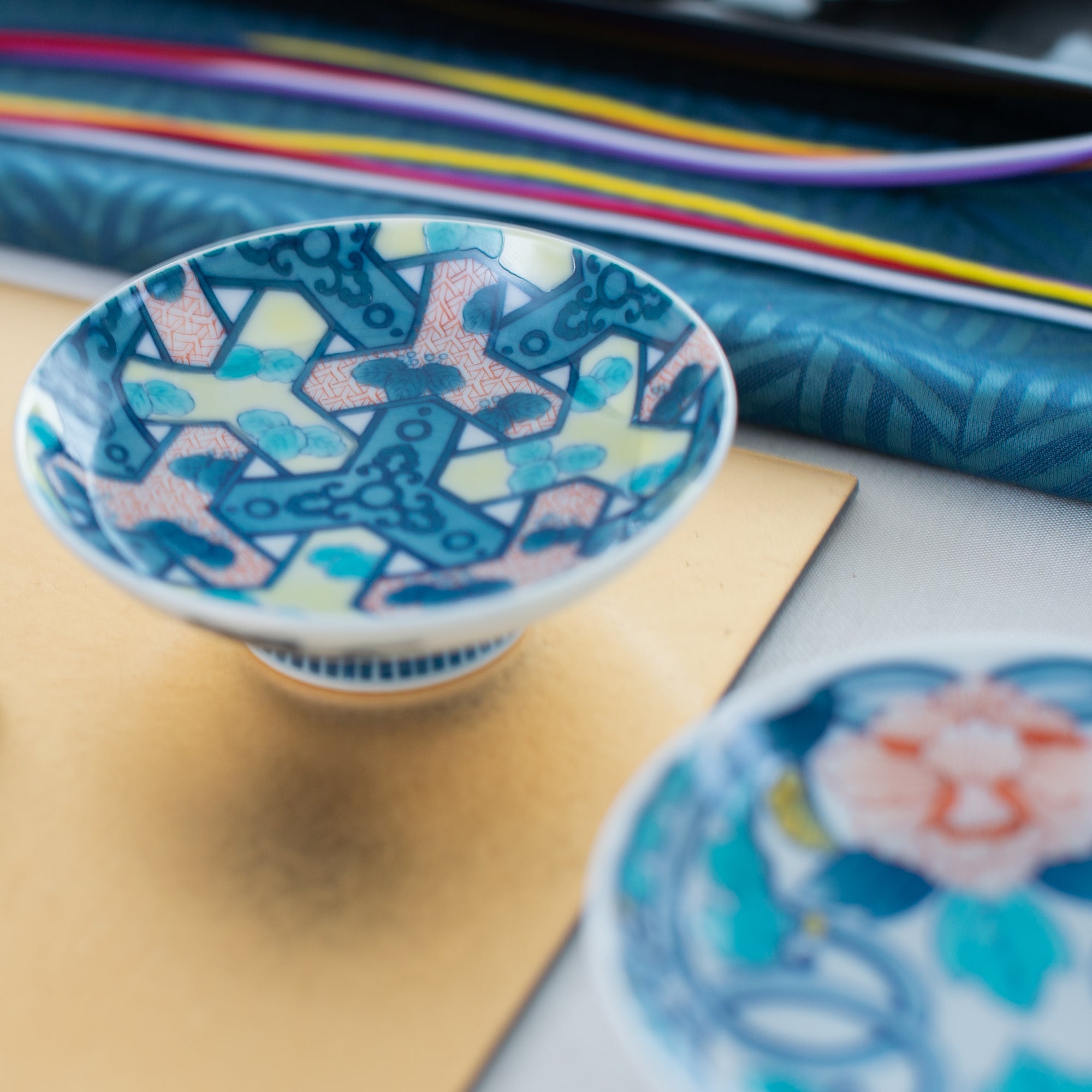




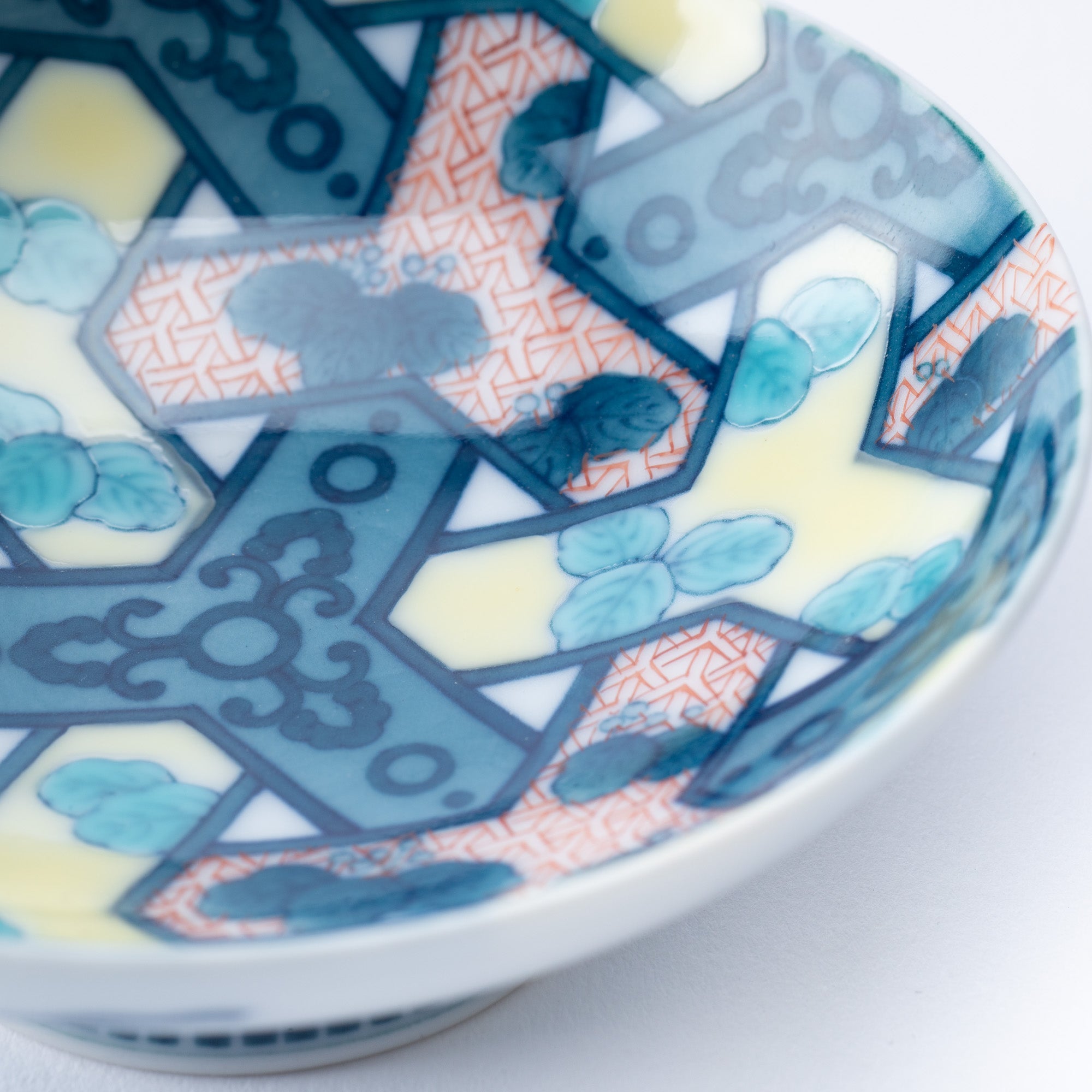



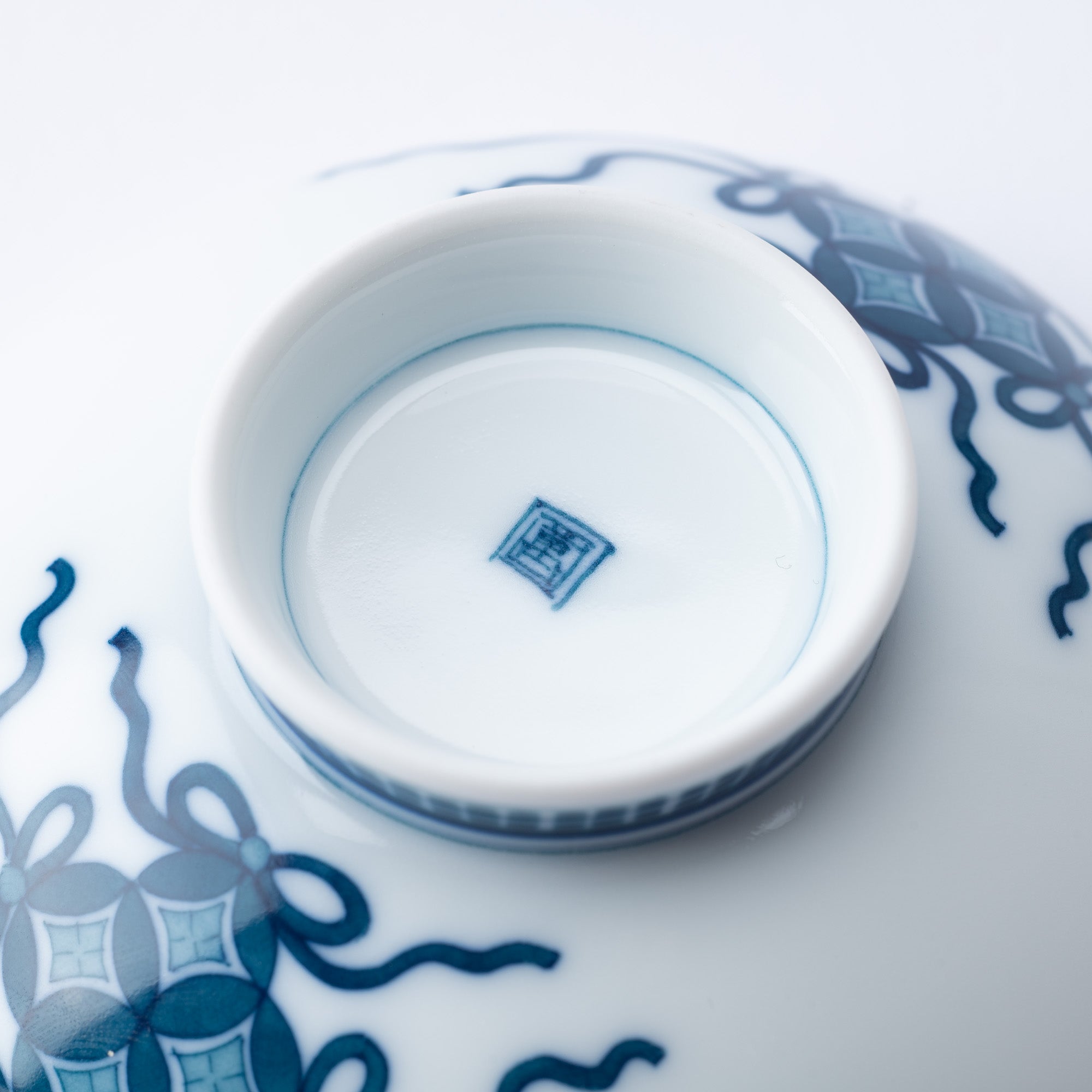
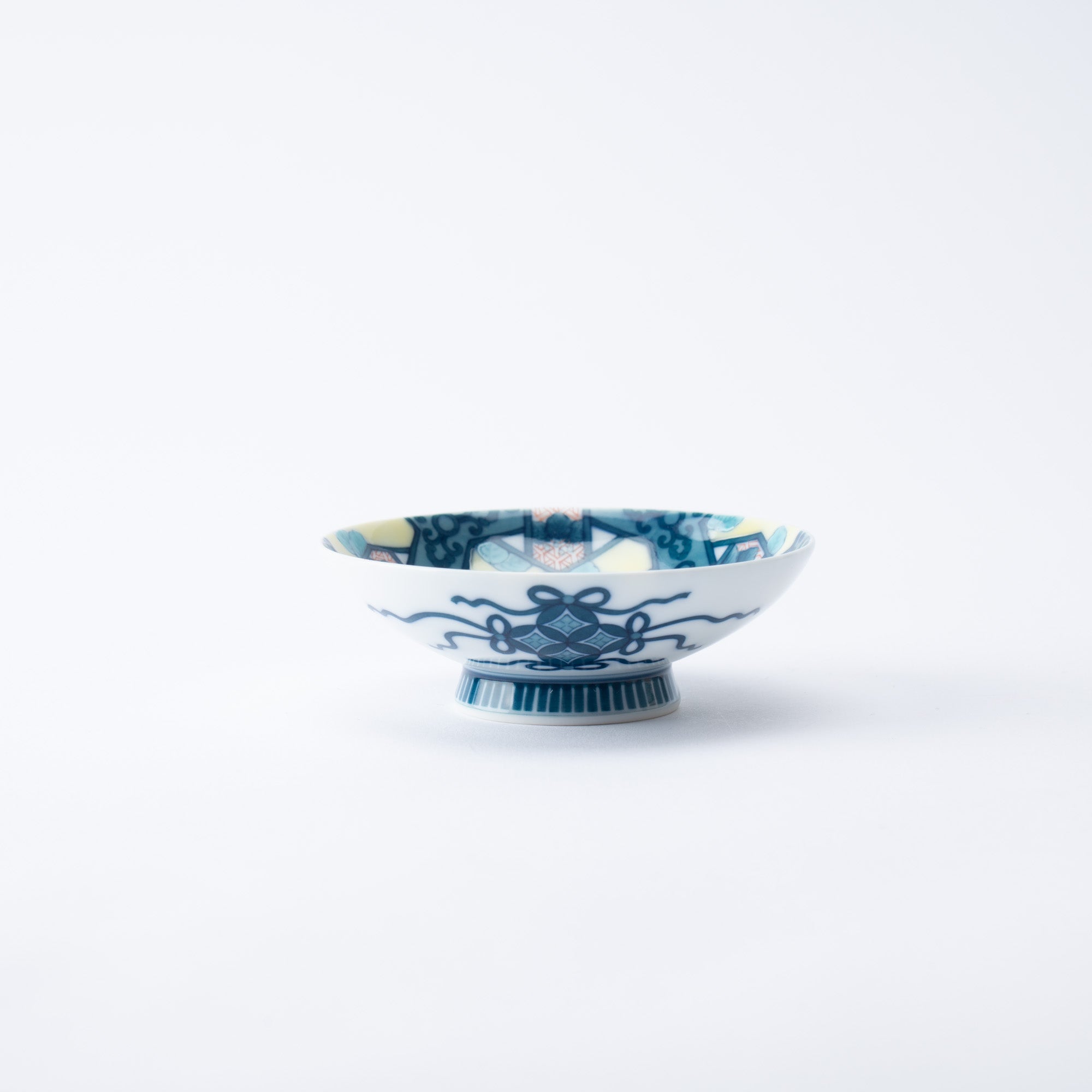
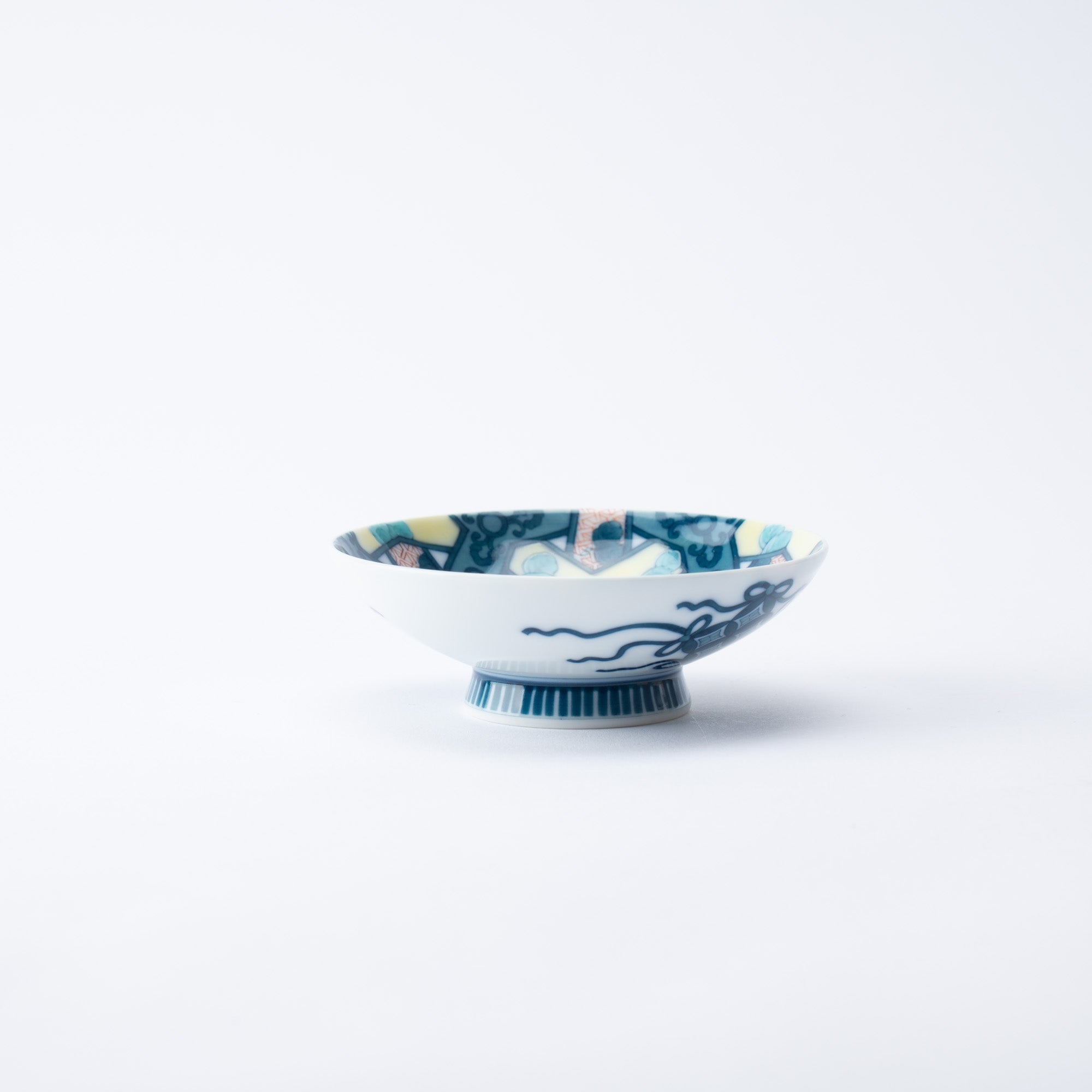



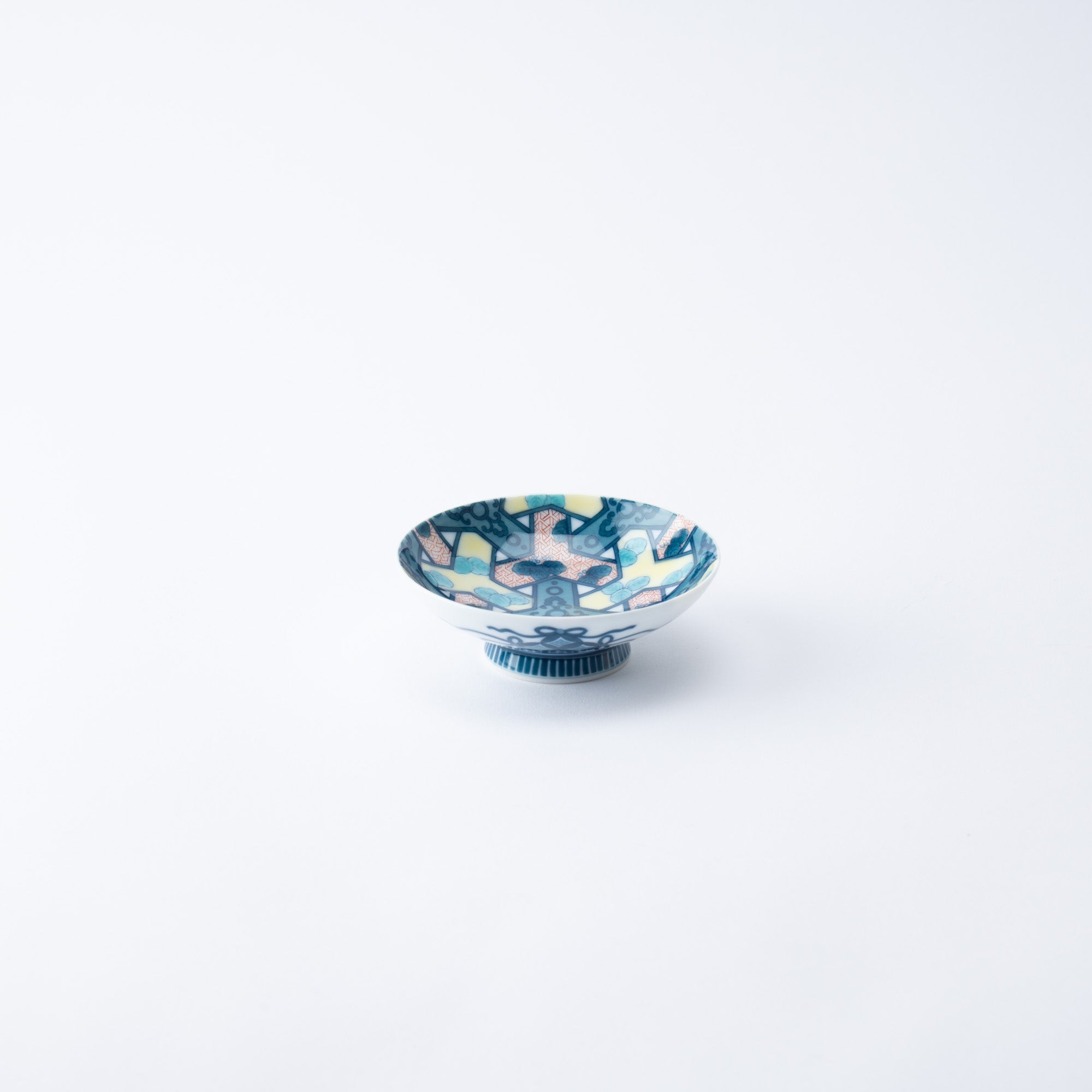


Nabeshima Tortoiseshell Pattern Sakazuki Flat Sake Cup
Estimated Shipping Widget will be displayed here!
This sakazuki flat sake cup is meticulously decorated with the traditional kikko "tortoiseshell" design using extremely fine brush strokes drawn by skilled craftsmen. The name of this tortoiseshell pattern is the Bishamon kikko pattern, inspired by the chain armor of Bishamonten, the god of war. It features the mitsumori kikko motif, with three tortoiseshell shapes interlinked to form a unified design.
The inner surface of the sakazuki flat sake cup is decorated with the tortoiseshell pattern, a classic Nabeshima pattern, while the reverse side is adorned with a cloisonne pattern and the side of the stand displays the iconic kushime "comb" pattern of Nabeshima ware.
The style of iro-Nabeshima has traditional rules, consisting of one color for sometsuke (indigo blue) and three colors for akae (red, yellow, and green). After the outline is drawn in indigo blue gosu pigment, overglaze painting in red, kibi (yellow), and moe (green) is used to color in the design. Although it may seem that many colors are used, in fact, only three are applied—a hallmark of iro-Nabeshima—and its beauty is regarded as the pinnacle of Japanese porcelain.
DETAILS
| Quantity | 1 |
| Size |
D 9.3 cm (3.7 in) x H 3 cm (2 in) |
| Material | Porcelain |
| Package Type | Wooden box |
| Microwave | Yes |
| Dishwasher | Yes |
Maker / Brand
Hataman Touen inherits the rich history and techniques of Imari Nabeshima ware, a tradition spanning 370 years, while embracing the spirit of Japanese culture that enriches the heart and soul. They aim to embody Japanese aesthetics in a modern context and share their story and products with the world.
Crafts
Nabeshima ware is a type of porcelain crafted at the meticulously managed Nabeshima domain kiln. This kiln, which operated as a government-run project under the direct supervision of the Saga Nabeshima domain, flourished during the early Edo period (1603–1868 CE).
For approximately 250 years, Nabeshima ware was reserved solely and exclusively for shoguns and feudal lords, with the kilns producing exquisite pieces in styles like iro-Nabeshima (overglaze enamel), ai-Nabeshima (sometsuke), and Nabeshima seiji (celadon). After the feudal system ended, the kilns were privatized, welcoming new potters and giving rise to what is now known as Imari Nabeshima ware.
Choose options




















Estimated Shipping Widget will be displayed here!
Sakazuki
We have curated a collection of exquisite sakazuki sake cups from all over Japan, designed to enrich the blissful experience of savoring your favorite sake. The term "sakazuki" refers to any sake cup, though it traditionally describes a flat, plate-like vessel, representing the oldest style. Holding the cup delicately with both hands—grasping its sides and bottom—embodies the essence of Japanese sake culture.
Sakazuki cups typically contain just a few sips, and the beautifully adorned ones are treasured by collectors for their aesthetic appeal. Using a stunning sakazuki for a special sake, a celebratory occasion, or when hosting guests, will create an unforgettable moment.
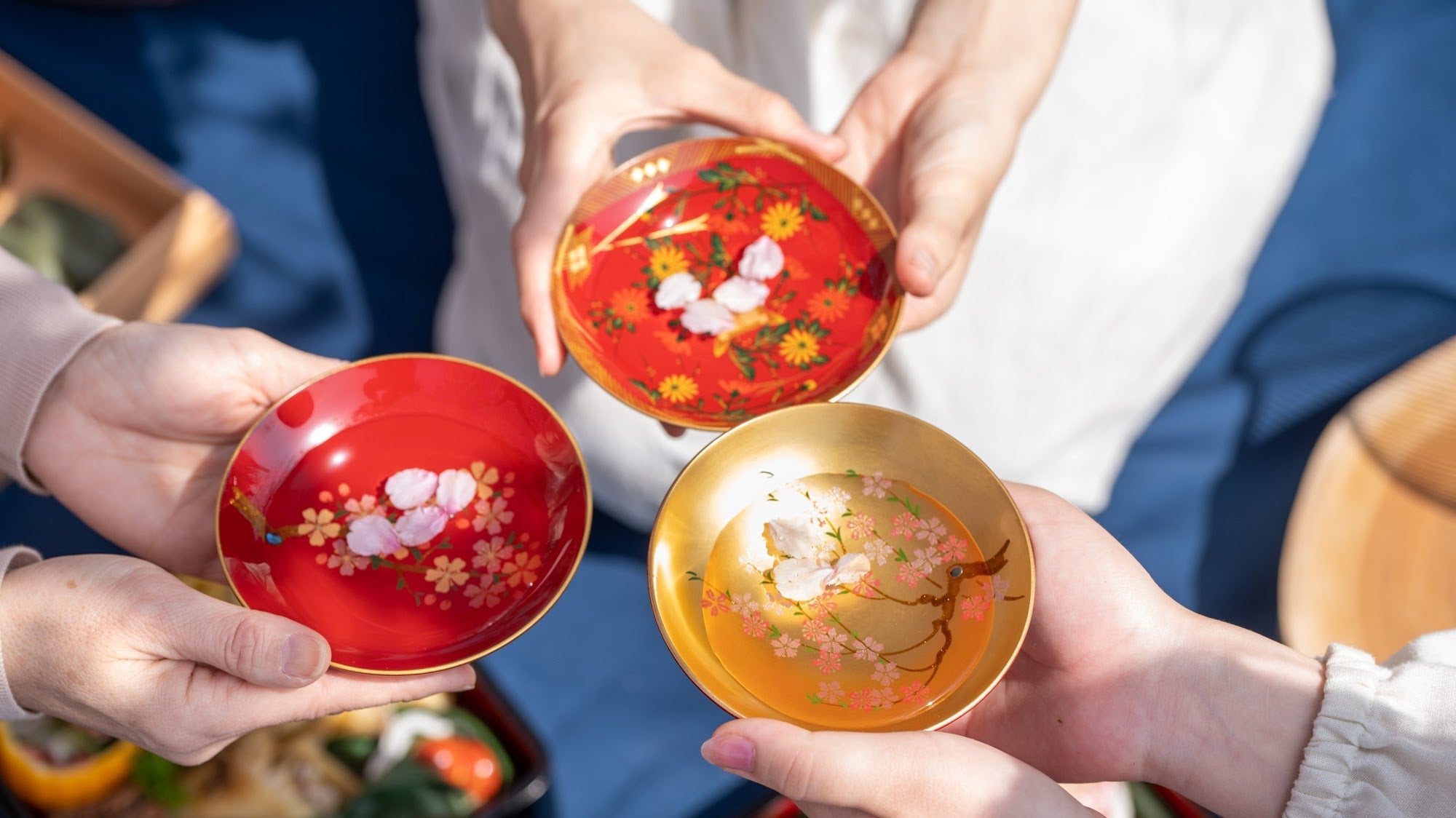
Exploring Hataman Touen Gallery

Guide to Japanese Sake Items

Beautiful Tradition Enjoyed with Imari Nabeshima Ware
